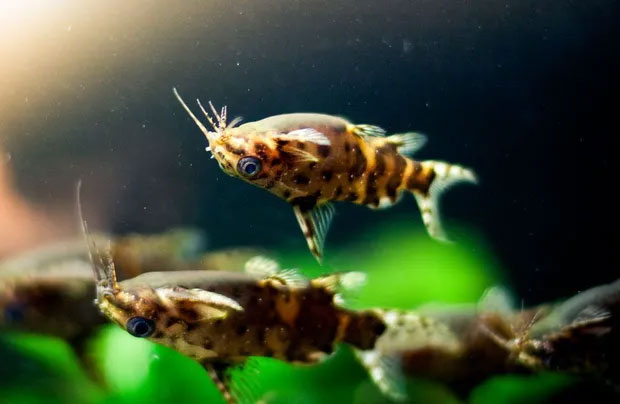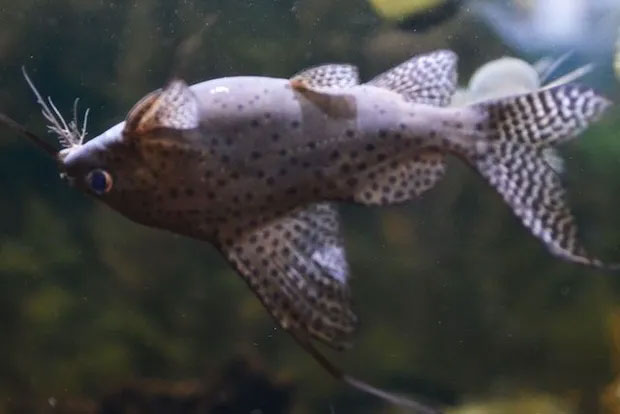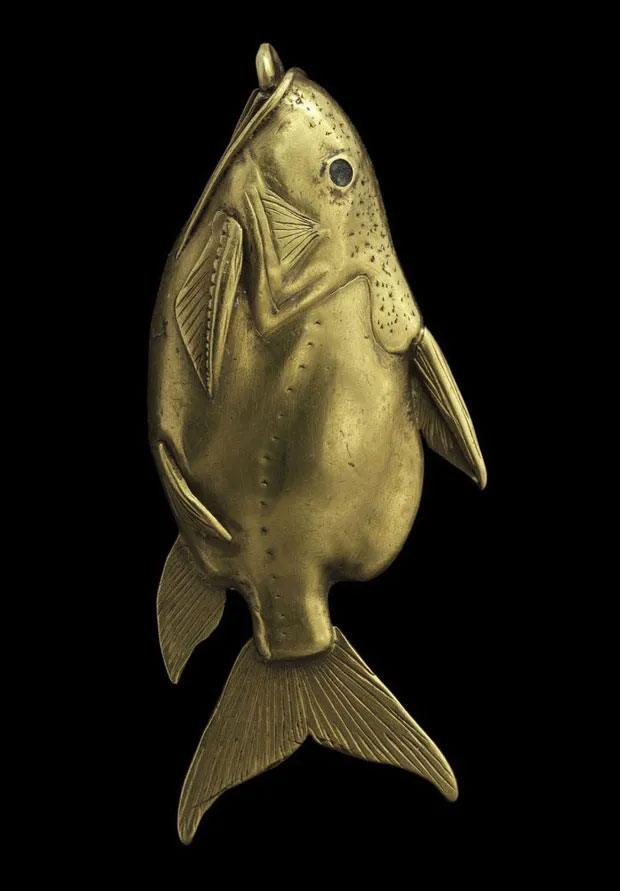Catfish swimming on its back - A fish so unique that the Egyptians used the image as a lucky charm
The phrase "Fish swims back" was originally a joke when a certain fish was dying and was about to swim back to the golden stream.
According to science, when dead fish will lose the ability to maintain equilibrium and their bodies will be turned upside down. So, if you see a fish swimming on its side or on its stomach, it is a sure sign of injury or death.
However, reverse swimming is characteristic behavior of a species of catfish of the genus Synodontis native to the Congo basin.


Catfish swim back in the Amazon River.
Explaining the backstroke of this fish, scientists think that the water of the Amazon River is inherently oxygen-deficient - a natural occurrence in some river systems, especially those with low light and dense vegetation. .
One theory is that fish swim upside down to forage more efficiently. This fish often grazes on the undersides of submerged branches and logs, and swims upside down making these areas more accessible.
The belly-up catfish spends most of its life swimming on its back. This lifestyle is so effective that even though they can swim upside down like regular fish, they don't often turn over. Therefore, their physical characteristics also change. More specifically, if the fish swimming upside down often has a dark back and then fades to the abdomen to easily camouflage against predators from above, the belly-up catfish has the opposite body color. The belly of the fish is dark and the closer to the back, the lighter the color will be.

Ancient Egyptian anti-drowning charm.
It is also easier to catch prey such as aquatic insect larvae when attacking in this supine position. Swimming upside down also makes it easier for the fish to "breathe" the thin layer of oxygen-rich water available on the surface.
Although it has only been studied by scientists for about 20 years, the influence and strange habits of this fish have attracted the attention of human ancestors many centuries ago.
The upside-down catfish has been carved into the walls of Egyptian tombs dating back 4000 years. An upside down catfish pendant was a popular amulet in ancient Egypt, as it was thought to prevent drowning.
Today, backstroke catfish can be found in any freshwater or aquarium shop. Many aquarists are very fond of choosing this fish instead of the traditional tank cleaner. Another plus point in backstroke catfish is that even if they escape into the wild, they have less chance of causing ecological disaster like some other exotic animals.
- Holding a tree and tapping dry mud, the man reaped the surprise when he turned them over
- Close up of fish climbing the cave to feed
- Unbelievably between the four surface waters, Phu Quoc has a strange and poisonous fish
- Unique: Colorful dragon catfish is not a joke
- Private farms successfully produce breeding catfish
- Preservation and successful development of rare and precious species of catfish
- This is the fastest way to swim in the world, but it is not present in competitions
- 11 species of giant fish are in danger of extinction
- Video: The girl uses her hand to catch giant catfish
- Swimming in the tank, goldfish are swallowed by catfish
- Catfish - a blood-rich dish
- Discover new fish species
 Animal 'suffering' after hibernation
Animal 'suffering' after hibernation Why do goats climb well?
Why do goats climb well? Scientists were surprised to see chimpanzees eating turtles
Scientists were surprised to see chimpanzees eating turtles Giant catfish died deadly due to drought in Thailand
Giant catfish died deadly due to drought in Thailand A deep hole appeared in a fish pond, 20,000 fish disappeared overnight in China
A deep hole appeared in a fish pond, 20,000 fish disappeared overnight in China  Strange species in Southeast Asia becomes the first marine fish species 'extinct due to humans'
Strange species in Southeast Asia becomes the first marine fish species 'extinct due to humans'  What time of day is the easiest to fish?
What time of day is the easiest to fish?  Special uses of a highly poisonous plant that grows throughout Vietnam
Special uses of a highly poisonous plant that grows throughout Vietnam  Why are there so many giant fish flooding the Three Gorges Dam but no one dares to catch them?
Why are there so many giant fish flooding the Three Gorges Dam but no one dares to catch them?  Specialty fish 'vong bat lieu ngu' is more expensive than gold but still sought after
Specialty fish 'vong bat lieu ngu' is more expensive than gold but still sought after 